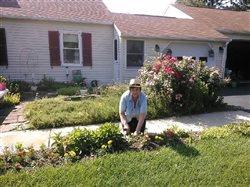
Understanding coronary artery disease and the latest treatment technologies
(BPT) – In December of 2015, Marian Kearney began to have a heavy feeling in her chest and was constantly tired, but couldn’t put her finger on any specific cause. The persistent physical exhaustion was getting in the way of living her life. As a retired neurology research coordinator and cancer survivor, she was very familiar with the health care system and the medical challenges that women can face, but she didn’t immediately suspect heart disease.
“Both my father and younger sister had coronary artery disease, but having survived cancer, I didn’t recognize right away that my fatigue could be related to my heart health,” Kearney says. “I went in to have a stress test and my cardiologist told me that, though I wasn’t feeling typical chest pain, or angina, it is common for women to present different indicators of heart disease. I took medication to relieve the symptoms but by February, my condition still hadn’t changed. One of the arteries on the right side of my heart was 95 percent blocked and one of the main arteries, the left anterior descending artery, was 100 percent blocked.”
An estimated 15 million Americans are affected by coronary artery disease (CAD) which causes the blood vessels that feed the heart to become narrow, making it hard for blood to flow to the heart properly. CAD, the most common type of heart disease, is the leading cause of death in both women and men in the United States.
When treating CAD through a medical intervention, the goal is to re-establish blood flow to the heart by either widening or bypassing clogged arteries to provide a long-lasting, cleared path for blood to flow to the heart. In some patients with CAD, stents — small expandable mesh tubes — are often used to open narrowed arteries and help reduce symptoms such as chest pain (angina) or to help treat a heart attack.
While most people are familiar with the concept of heart disease, appropriate preventative lifestyle choices, and medication options that can prevent it, a recent survey conducted by Harris Poll showed that one out of three people are not familiar with coronary stenting as a treatment option for CAD. John Wang, M.D., an interventional cardiologist who specializes in treating CAD at MedStar Union Memorial Hospital, in Baltimore helped Kearney determine what action was needed.
“Many patients who are diagnosed with coronary artery disease aren’t always aware of the available treatment options, so it’s important to be an active participant in managing one’s medical care,” says Dr. Wang. “That includes feeling comfortable enough to ask the doctor for details about all medications or interventional procedures available to treat the disease.”
While coronary stents have been used to treat CAD since the 1990s, a new stent technology — the SYNERGY Bioabsorbable Polymer Drug-Eluting Stent System — was approved by the U.S. Food and Drug Administration in October 2015, and is the first and only bioabsorbable polymer stent available in the U.S. Unlike traditional drug coated stents that feature permanent polymer coatings known to cause inflammation within the vessels, the SYNERGY stent’s coating dissolves and disappears after the stent’s drug has been released. This action enables quick healing of the blood vessel, leaving only the metal part of the stent in the body; ensuring that the blood vessel remains propped open and can deliver blood to the heart for life.
“I use the SYNERGY stent because of how easy it is to deliver to the diseased segment of the blood vessel that I am treating,” says Dr. Wang. “Beyond my personal experience, findings from clinical studies like the EVOLVE II trial demonstrated the excellent safety and effectiveness of this new treatment option.”
Through a decade of research and ongoing feedback from physicians around the world, this bioabsorbable polymer technology designed to heal the vessels quickly and safely has been used to help more than 100,000 patients, like Kearney, get back to what matters most to them.
“Given the extent of my blockages, I was afraid that whatever my options, I would face a long recovery time and that scared me,” Kearney says. “I have older parents and all I could think about was ‘how am I going to take care of them?’ But with Dr. Wang’s care I am able to get back to what matters most to me — I’m able to help my parents, tend to my flower garden, and most importantly, enjoy time with our family.”
Visit www.bostonscientific.com/SYNERGYPatient to learn more about heart health and the SYNERGY stent.


